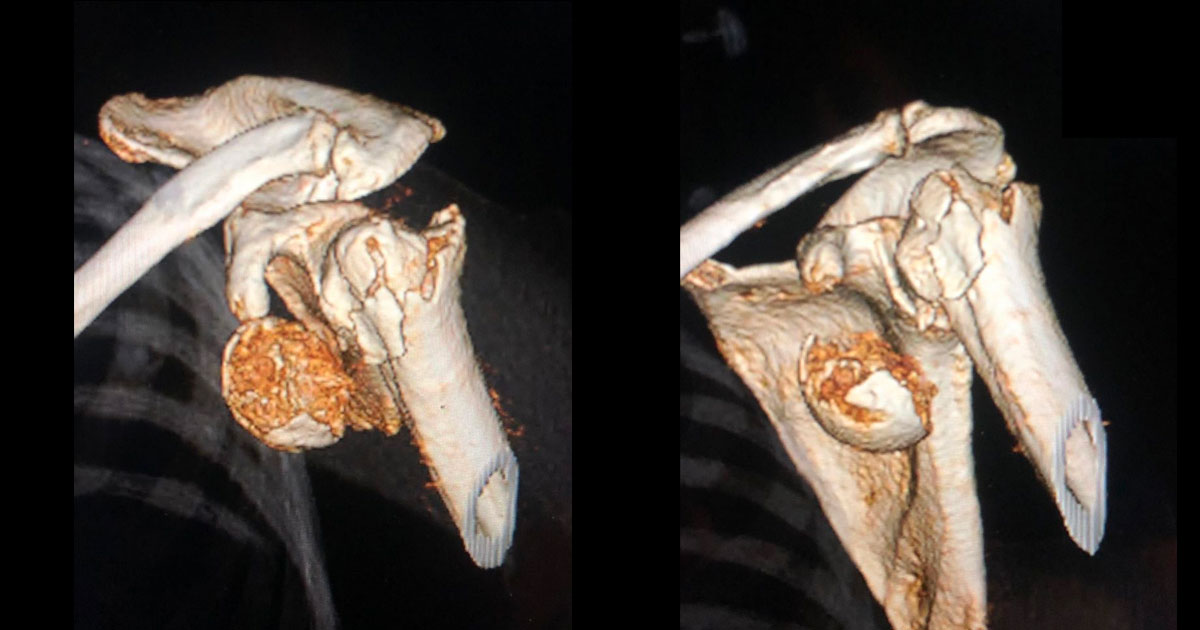
Fracture / Dislocation of the Shoulder
This 76 year-old female suffered a significant fracture of her humerus (the bone of the upper arm) after tripping and falling up a stair. The head of the humerus, which forms the ball of the shoulder joint, was broken entirely off the shaft of the bone and had dislocated out of its normal position. The shaft of the humerus had shattered into several pieces and migrated up towards the shoulder.
Fractures in this position pose a risk to the surrounding nerves and blood vessels, and when she presented to hospital this patient was experiencing numbness over the shoulder area caused by injury to a nearby nerve.
Although this is a severe example, fractures of the upper humerus are very common particularly in older female patients, who are more likely to have fragile bones. If left untreated, these injuries can pose a risk to a patient’s independence and ability to perform everyday activities.
After looking at the images and discussing her options, the patient chose to undergo surgical management. When fractures are as extensive as this one, it is often preferable to replace the shoulder joint entirely. In this case a reverse shoulder replacement was performed, which switches the position of the ball and socket in the joint to compensate for damage to the surrounding rotator cuff muscles.

After the operation the patient has to rest their arm in a sling for 3-4 weeks to allow the surrounding bones and tendons to heal. Physiotherapy is then started after 4 weeks, slowly trying to get the patient to regain as much movement as possible. It takes at least 6 months to recover from this injury and improvement continues for up to 12 months.
In cases of complex fractures such as this one, patients regain reasonable function and motion but not quite as good function as what they had prior to this difficult injury.
For specific advice regarding shoulder fractures, please book an appointment with Dr David Duckworth on (02) 9806 3333